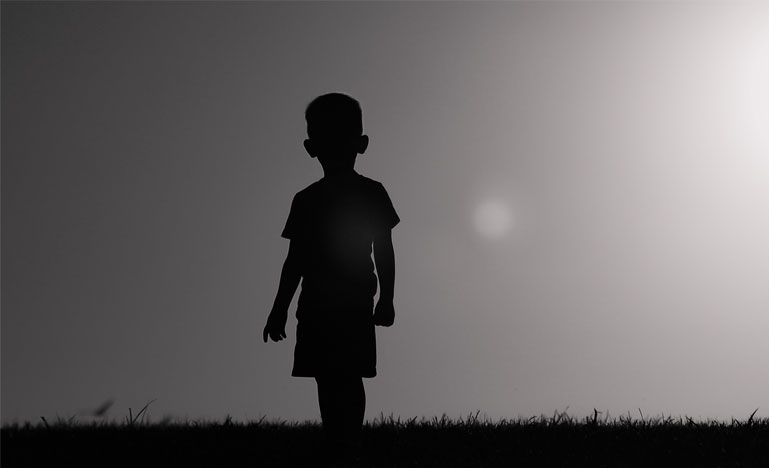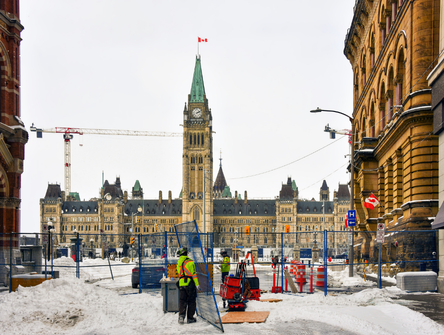Protecting the best interests of Indigenous children
Beyond committing to much needed funding, Canada will have to do more to recognize the inherent jurisdiction of Indigenous peoples over child welfare.

The federal Indigenous child welfare law, passed last year, affirms what Indigenous peoples across Canada have long sought: jurisdiction over child and family services. Its effectiveness, however, will be determined by two factors: the courts and money.
Critics of the legislation take issue with some of the legislation's vague language, including what constitutes the best interests of the child. Only time will tell how the courts will weigh in. In the meantime, government agencies and Indigenous governing bodies will have to make due.
It will also take money to support the principles outlined in the Act.
In that respect, it's up to the federal government, and to a certain extent, the provinces, to put forward the funds that are going to be needed, says David Taylor, a member of the CBA's Aboriginal Law section and an Ottawa-based practitioner who represents Indigenous clients.
Beyond recognizing the inherent jurisdiction of Indigenous peoples and establishing national standards for the welfare of Indigenous children, the legislation has aims to bring Canada nearer to complying with the principles outlined in the United Nations Declaration on the Rights of Indigenous Peoples.
Stable funding remains elusive
Indigenous governing bodies have two options under the law: express their intent to exercise their jurisdiction, or seek a tripartite coordination agreement with the federal and provincial/territorial governments.
If the parties can reach an agreement within 12 months – or, in the absence of one, reasonable efforts to reach an agreement are made – the laws of the Indigenous governing body take precedence over federal, provincial or territorial law.
"It's going to be a power struggle in terms of funding, who decides what funding is necessary, who decides what funding is acceptable and reasonable and who gives that funding," says Koren Lightning-Earle, a lawyer at the University of Alberta.
"Without the ability to operationalize the requirements under the legislation, it can become quite meaningless," says Sarah Clarke, a child and family lawyer in Toronto.
Both Clark and Lightning-Earle made their comments before the federal government signed an agreement with the Assembly of First Nations this week to lay out a "road map" for a funding model. Ottawa has still not committed to a figure. Pam Palmater, the chair of Indigenous Governance at Ryerson University, expressed her concerns to the CBC that the government is not getting on with the job of costing out the needed services, or recognizing the jurisdiction of First Nations over child welfare. It also needs to provide the necessary funding that comes with both, she says.
It bears reminding that in 2016, the Canadian Human Rights Tribunal handed down a ruling, following a complaint filed by the First Nations Child and Family Caring Society, that the federal government had been discriminating against First Nations by inadequately funding child welfare services. In 2019, the tribunal awarded up to $40,000 to reserve children who had been made wards of the state. Litigation is ongoing. Hadley Friedland, an assistant professor of law at the University of Alberta, rejects the notion put forward by the government that the child welfare law is a concrete measure that addresses the tribunal's findings of recklessness or a response to the TRC.
"There are some real historic positives in the legislation – raising the floor and, also, the affirmation of jurisdiction is huge," she says. "But the funding is not addressed in this bill, and so it doesn't seem very accurate to say this bill is a response to the TRC or an answer to the Caring Society issue. That's going to involve funding."
The role of the courts
Interpretation by the courts will also play a big part. The Act is only 22 pages in length and the federal government has yet to provide regulatory guidance. Courts are only beginning to delve into it.
"The next 18 to 24 months are very exciting on the jurisdiction side," says Clarke. "I have not yet seen an Indigenous community attempt to assert its law over child welfare yet, but certainly the legislation opens the door for communities to exercise their jurisdiction in that regard."
Provincial government approaches to the legislation have varied widely, says Friedland. Some provinces have interpreted the Act to say that the definition is of an Indigenous governing body is not clear. They therefore don't consider themselves bound to give notice or consult with bands, Metis or Inuit groups. It will create an imbalance between provincial governments and those of Indigenous governing body with varied resources.
"If it's going to be left up to the courts, it's going to be uneven," says Friedland. "If the provinces are going to take ridiculous positions where they're saying, 'well, a court will have to decide it', in effect they're stopping the intent and spirit of this legislation."
In recent decisions referencing the child welfare law, courts have concluded that its provisions are to be considered paramount. Both British Columbia (Child, Family and Community Service) v. S.H., delivered in April, and Alberta (Child, Youth and Family Enhancement Act, Director) v K.C. and J.P. made this statement.
A broader definition of care providers to include foster parents emerged from another ruling, M.L. v. B.T. and Dilico Anishinabek Family Care, decided in March. The judge found that the applicants for custody of a four-year-old girl are not foster parents. However, they fit the definition of care providers under the Act as they have provided day-to-day care for the child.
In Huron-Perth Children's Aid Society v. A.C., delivered in May, there are extensive references to the Act in considering placement options. The Ontario Court of Justice held that because the children involved in the matter are of Metis heritage, it must consider the importance of cultural continuity, the best interest test for Indigenous children and priority of placement.
Also looming over the whole framework of Indigenous child welfare is a reference to the Quebec Court of Appeal on whether the law intrudes on provincial jurisdiction. The province is raising questions over whether minimum national standards for service delivery go beyond federal authority. Quebec is also asking whether the law means the federal government is affirming the recognition of inherent jurisdiction over child and family services as a section 35 right.
Delays in the court system due to the COVID-19 pandemic mean the hearing may not take place until the autumn of 2021.
"Certainly Bill C-92 does make use of some pretty powerful tools of federalism. If properly applied, it could provide a lot of strength to First Nations jurisdiction which, I would say, already exists," says Taylor, who is counsel for the First Nations Child and Caring Society, which will intervene in the reference.
Best interests of the child
Meanwhile, Friedland and Lightning-Earle emphasize the importance of the best interests of the child as the paramount consideration. The Wahkohtowin Law and Governance Lodge Compliance Guide for Social Workers and Service Providers states that "Indigenous children's need for continuing relationships with their parents, family members, community and culture is at least equally important as other indicators."
"I think people felt a bit paralyzed by this Act rolling out so fast and the vagueness," says Friedland. By bringing their own definition of the best interests of the child, Friedland says, Indigenous governing bodies will have a chance to shape the arguments about what it really means.


